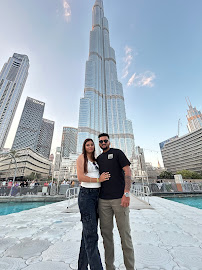Frequently Asked Questions (FAQs)
Al Ain Oasis – Home to a 3,000-year-old falaj irrigation system that sustains agriculture and showcases early water conservation techniques.
Cooling Architecture – Traditional buildings use wind towers and thick coral-and-stone walls to stay naturally cool in extreme heat.
Mangroves Combat CO₂ – Coastal mangrove forests absorb carbon dioxide, helping offset the city’s carbon footprint while protecting wildlife.
Film Destination – Abu Dhabi’s deserts and futuristic skyline have been featured in Hollywood films like Star Wars: The Force Awakens, Dune, and Furious 7.
Desert Mushrooms – Rare edible mushrooms, known as desert truffles, grow after winter rains, highlighting the resilience of nature in harsh desert conditions.
The central area of Abu Dhabi is Abu Dhabi city, situated on an island linked to the mainland. This hub serves as the capital’s administrative and cultural heart, housing key government ministries and iconic landmarks such as the Sheikh Zayed Grand Mosque and the Presidential Palace. The island’s city centre represents the original core from which the emirate expanded.
Abu Dhabi is famous for its iconic architecture, luxury lifestyle, and rich cultural heritage. Visitors are drawn to landmarks such as the Sheikh Zayed Grand Mosque, Emirates Palace, and Yas Marina Circuit. The city is also recognised globally for its art museums, cultural festivals, and world-class entertainment options, making it a top destination in the Middle East.
No, Abu Dhabi is not part of Dubai. Both cities are separate emirates within the United Arab Emirates. While Dubai is known for its commercial hub and high-rise skyline, Abu Dhabi is the political and administrative capital, as well as the largest emirate by land area.
Abu Dhabi is approximately 140 kilometres southwest of Dubai. By road, the journey takes around 1.5 to 2 hours via the E11 highway, one of the best-maintained and most popular routes in the UAE. There are also frequent bus services connecting the two cities.
Abu Dhabi is situated on the southeastern coast of the Arabian Peninsula along the Arabian Gulf. For travellers wondering ‘where is Abu Dhabi’, it lies southwest of Dubai and is bordered by other emirates and the Saudi Arabian desert, combining urban, coastal, and desert landscapes.
Abu Dhabi shares a border with Saudi Arabia to the south and west. Within the UAE, it borders the emirates of Dubai, Sharjah, Ajman, and Fujairah, as well as the Sultanate of Oman in certain areas.
Abu Dhabi city is primarily situated on a T-shaped island connected to the mainland by bridges. However, the emirate itself extends over a vast mainland area, encompassing deserts, oases, and smaller islands along the coastline.
Abu Dhabi is the capital of the United Arab Emirates. It serves as the seat of the federal government, hosting key administrative offices and the residence of the country’s president.
Abu Dhabi is well-connected to other emirates by a network of modern highways, including the E11 and E10. There are regular intercity bus services, taxis, and car rental options for travellers. The emirate is also served by Abu Dhabi International Airport, which links it to global destinations.
Abu Dhabi has a hot desert climate, with extremely high temperatures in summer, mild winters, and low annual rainfall. Summer temperatures often exceed 40°C, while winter averages around 24°C. The city experiences abundant sunshine year-round, making it ideal for beach visits and outdoor activities during the cooler months.
